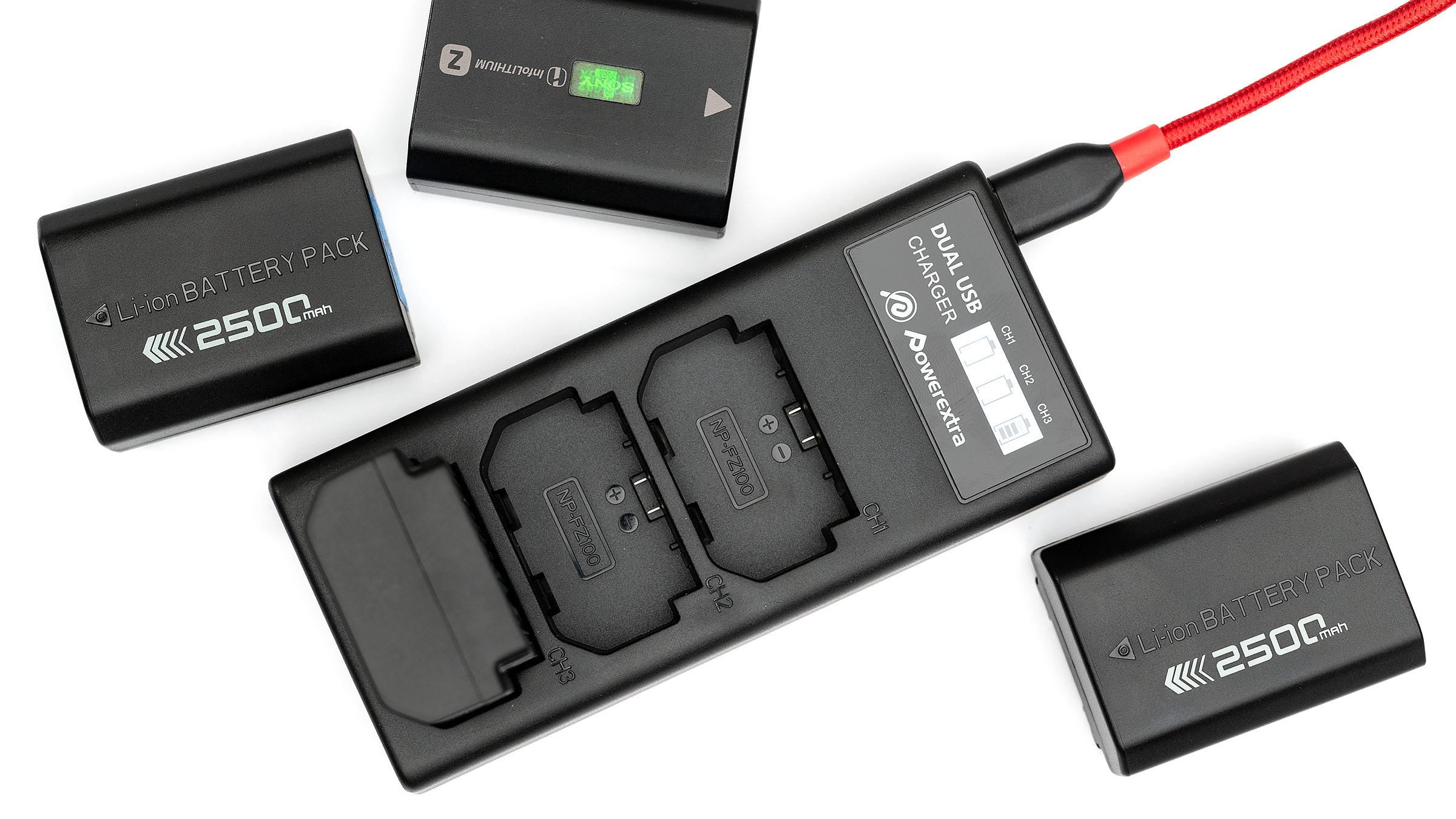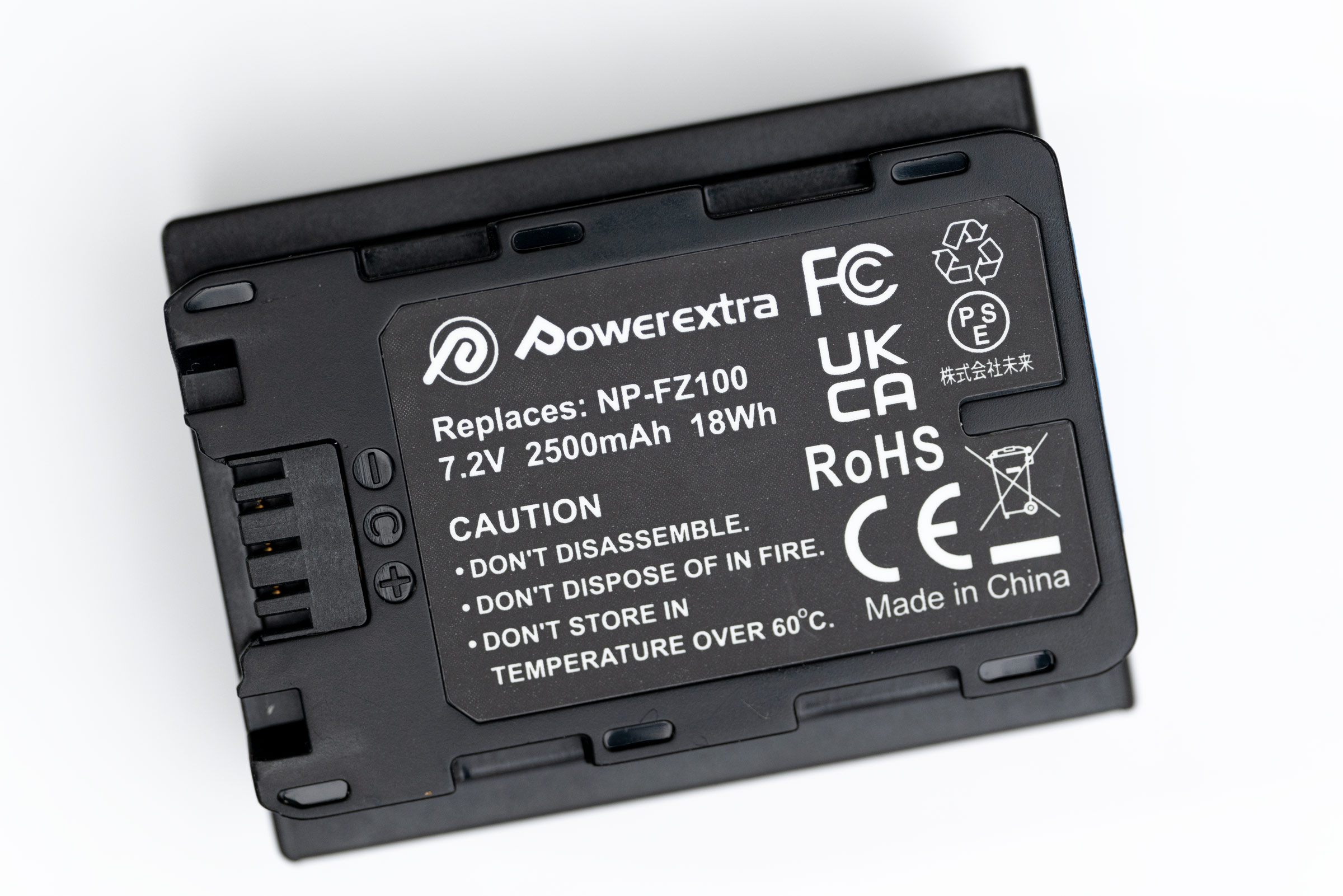We’ve done a fair amount of battery testing on this site, so when Powerextra contacted me and asked whether we wanted to test out their 2500mAh NP-FZ100 battery replacements, I quickly agreed. I have genuine Sony batteries for comparison as well as a pair of Vemico batteries (previously reviewed here), and I’ve had good luck with Powerextra batteries in the past for my Canon equipment.
After my first week of testing, this is how the batteries compare.
This post is NOT SPONSORED, but all Amazon links are affiliate links and will help support this site.
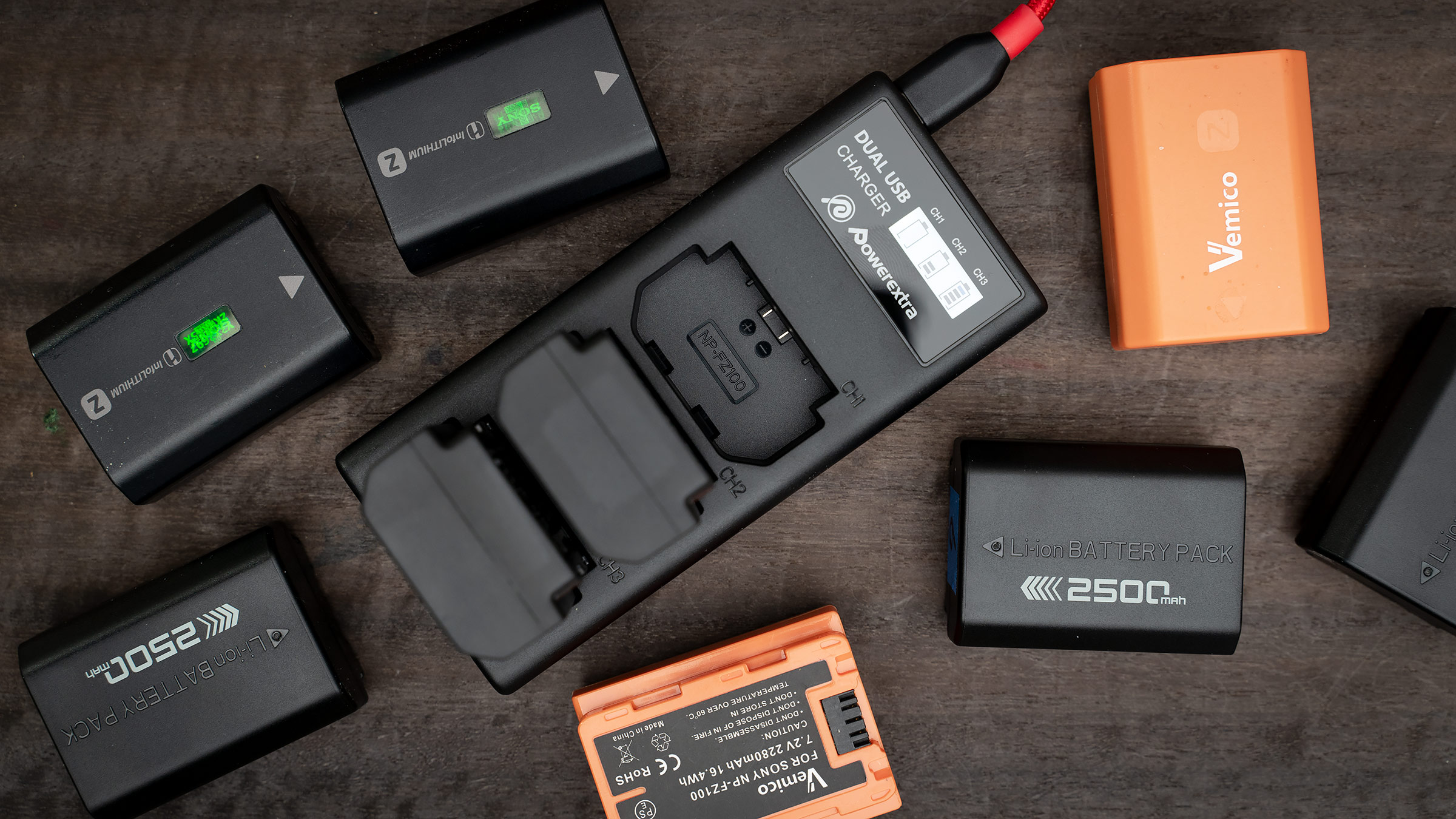
What You Get, By The Numbers
First of all, Powerextra sells their NP-FZ100 battery replacements in a set of three along with a triple charger (powered via USB-C or Micro-USB ports). The set costs about $55 on Amazon, currently with an additional 20% off coupon available. A genuine Sony NP-FZ100 costs $78… a pretty dramatic difference.
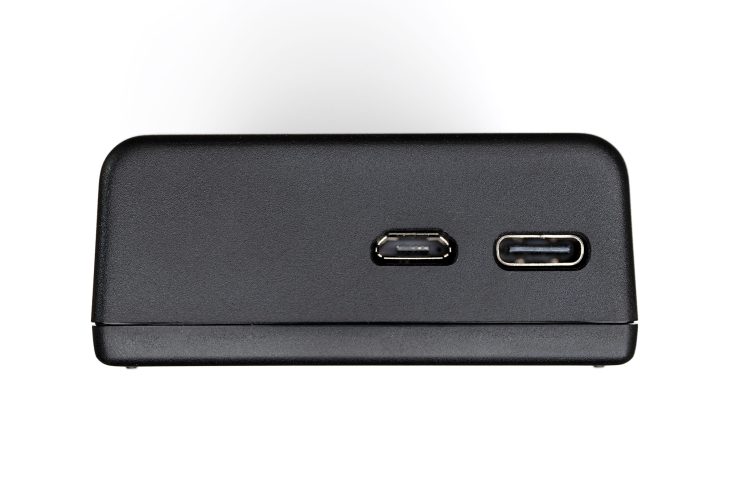
According to Powerextra, their replacement battery has a power capacity of 2500mAh, and at 7.2v, that’s 18Wh, which is about 10% percent higher than the original Sony NP-FZ100 battery which is rated at 2280mah / 16.4Wh. I’ll also be re-testing the Vemico batteries, which have the same power rating as the Sony.

The Sony and Powerextra batteries weight 83g each, while the Vemico weighs 77g. Battery dimensions are identical.
Initial Problems
Before starting, I’d be remiss if I didn’t mention a problem that cropped up immediately. When the batteries arrived in the mail, I attempted to charge them with the included charger, and two of the batteries started charging without problems. The third, however, would not charge at all. 1I also attempted to charge it in my Sony charger, but again, it did not respond. This can result from a battery draining to a very low level, at which point the charger does not recognize it as the correct type of battery and will not output power, as a safety precaution.
I contacted Powerextra and they sent out a new set the next day, and all of the new batteries charged as expected, and I ended up with extra batteries to test.
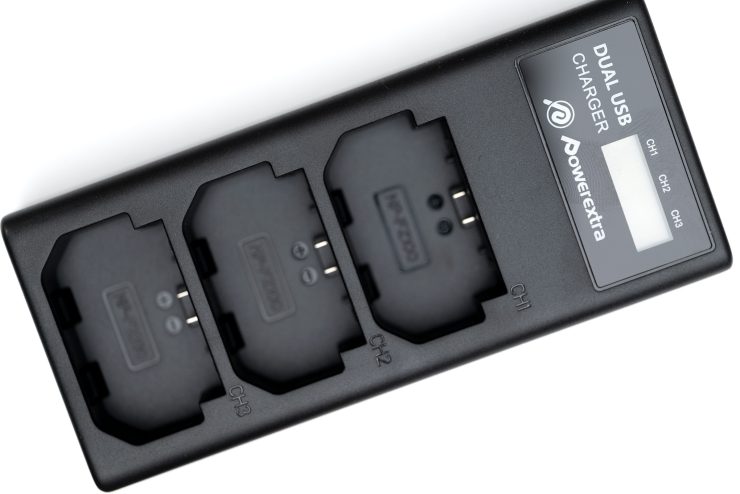
To see if this should be a concern, I searched Amazon’s reviews and then did a general Google search to see if this was a common problem, and didn’t see anyone else with the same issue, so I’m considering this a fluke, but one worth mentioning. Let me know in the comment section below if you’ve experienced anything similar.
Video Shooting Test
I wanted to test these batteries in a way that would drain them quickly and uniformly, but was also a relatively common real-world scenario, and shooting video fit the bill. My high-megapixel Sony A7RIII sucks up a lot of power when shooting video, especially when using large, stabilized lenses. The electronic viewfinder requires more energy than the rear LCD, but the LCD is easier to use for testing, so that’s what I’ve opted for here.
For this test, I set up my Sony A7RIII on a tripod with a Sigma 150-600mm | C with image stabilization on, lens and aimed it at my hummingbird feeders (with birds constantly coming and going, the camera will have to work to focus). I set the camera to shoot 4K 24p video, put a large SD card in the slot, and hit record.
Starting with the Sony battery, I recorded how long it took for the battery to die and rear LCD to turn off. I then tested the Powerextra and Vemico Batteries. I then repeated the test with another set of batteries, and then finally ran a 3rd test on a Powerextra battery only.
| Powerextra | Sony | Vemico | |
|---|---|---|---|
| Time to 0% Power (1) | 2 hours, 4 min | 2 hours, 35 min | 1 hour, 42 minutes |
| Time to 0% Power (2) | 1 hour, 55 min | 2 hours, 39 min | 1 hour, 44 minutes |
| Time to 0% Power (3) | 2 hours, 9 min | — | — |
As you can see, the Sony batteries (which happen to be a couple of years old) still last significantly longer than the Powerextra and Vemico batteries, by about a half hour. This means that the Powerextra batteries provided about 80% of the power of the Sonys.
In the Camera
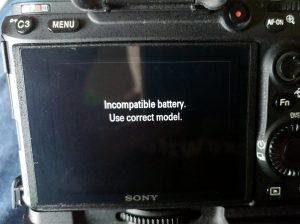
While shooting with each of the three batteries, I constantly monitored the battery power level reported by the camera. The Powerextra batteries appeared to report correctly, and I didn’t end up with any error messages from the camera.
This is a marked improvement over the Vemico batteries, which will often report to have 20-30% of their charge remaining, and then the camera will suddenly shut off for lack of power. Occasionally, with the Vemico batteries, I get an “Incompatible battery” error message from the camera, and I can’t use the camera until I replace the battery. Not cool.
Out of the Camera (Self-Discharge Rate)
Testing the self-discharge rate of these batteries will take some time, but I’ve charged one of each battery and set them aside and then measure the charge level after one month.
After 42 days on the shelf, this is the camera-reported charge rate of each battery:
- Sony: 88%
- PowerExtra: 100%
- Vemico: 97%
These are very unexpected results. I’m not sure why the Sony discharged so much more than the others, except possibly that it is an older battery. In any case, it’s nice to see that the other two batteries held their charge.
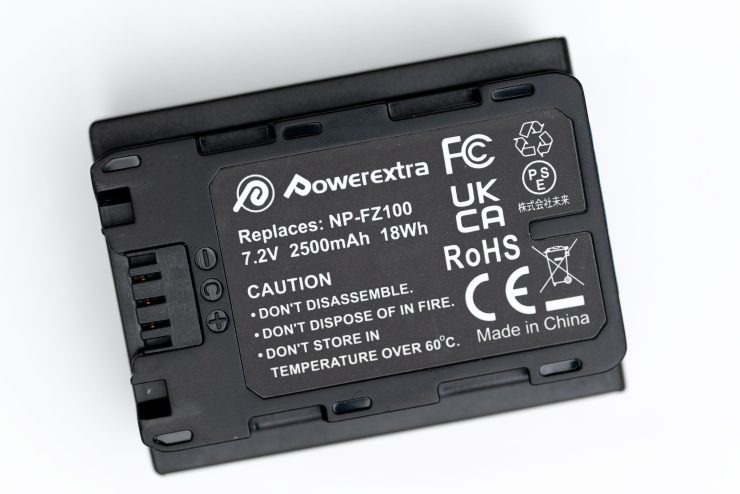
Conclusion: Should You Buy Them?
Quick Answer: YES… probably. Individually, the Powerextra batteries do not perform quite as well as the Sony originals, only reaching about 80% of their capacity (around 1800mAh).
However, buying the Powerextra set, you’re getting three batteries for 70% the price of a single Sony, so even at a reduced capacity, the Powerextra batteries cost less than 1/3rd of the price per mAh (Powerevxtra = $0.010 per mAh, Sony = $0.034 per mAh), plus the triple charger. That’s an excellent price.
If you’re a photojournalist, event photographer or your work is such that pausing to change batteries could mean missing important shots, then sticking with the Sony batteries is probably worth the extra cost.
For everyone else, I recommend the Powerextra batteries. Changing batteries takes just a few seconds, and shooting with a battery grip on your camera mitigates this problem even further. With the Powerextra batteries, you’re getting dramatically more power for your money. However, this article will be updated with reliability information as necessary.
These batteries can be purchased at Amazon.
Editorial Note: When a battery company stamps a mAh hour rating on their battery that has no foundation in reality, I immediately lose trust in the battery and the brand, even if the battery is otherwise decent. The practice is deceptive and disrespectful, yet seems to be commonplace with replacement batteries from China these days. They’ll continue the practice until someone holds them accountable, so if you’re as annoyed as I am and don’t buy these batteries for that reason, I wouldn’t blame you.
